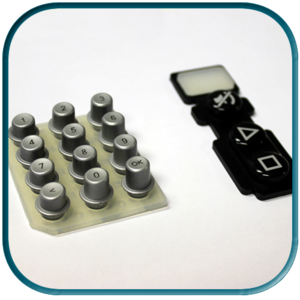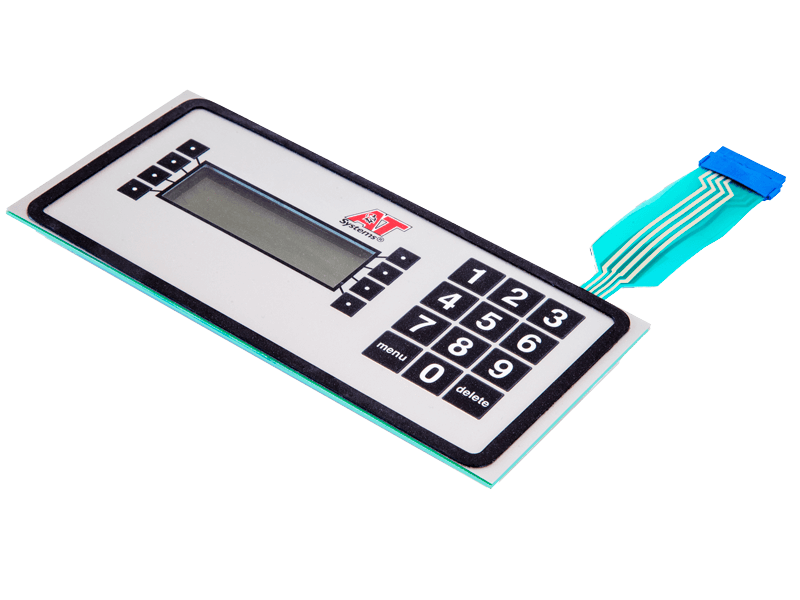Explore the Significance of Membrane Switches in Streamlining Device Controls
Explore the Significance of Membrane Switches in Streamlining Device Controls
Blog Article
Discover the Future of Control Interfaces: Why Membrane Switches Over Are Acquiring Popularity
As sectors progressively focus on easy to use and reliable control user interfaces, membrane buttons are emerging as an engaging solution that combines capability with design versatility. With the rise of wise technology and sustainability concerns, the capacities and technologies surrounding membrane layer switches warrant more detailed examination.
Recognizing Membrane Buttons
Membrane layer switches are important parts in modern electronic tools, serving as user interfaces in between makers and users. These switches are composed of numerous layers, usually including a graphic overlay, a spacer layer, and a circuit layer.

Resilience is another crucial function, as membrane buttons can be developed to resist environmental factors such as wetness, dust, and chemicals. This durability makes them ideal for applications in severe problems. Generally, understanding the structure and function of membrane buttons is essential for valuing their function in the advancement of interface in today's technology-driven globe.
Trick Advantages of Membrane Layer Buttons
Using a range of benefits, membrane layer switches have actually come to be a recommended option in different applications (Membrane Switches). Among the primary benefits is their compact design, allowing suppliers to maximize space in devices without endangering functionality. Membrane layer buttons are light-weight, which is particularly important in portable digital gadgets

Additionally, these switches provide outstanding durability. Created from flexible materials, they are resistant to dirt, dampness, and a selection of environmental variables, making them suitable for harsh conditions. This durability frequently converts into a much longer life expectancy compared to traditional mechanical switches.
In addition, membrane layer changes enable seamless combination of symbols and graphics, supplying visual adaptability and improving customer experience. Customization choices are considerable, allowing brand names to develop special interfaces that align with their item identification.
The level surface of membrane switches prevents the build-up of dirt and gunk, making them ideal for sanitary settings. Membrane buttons are cost-effective, as they can be created in high quantities at reduced prices, making them easily accessible for a broad range of industries.
Applications Across Industries

A myriad of markets are increasingly adopting membrane buttons due to their convenience and performance. These control interfaces are specifically widespread in the vehicle market, where they are utilized in dashboards and infotainment systems, supplying a smooth and straightforward user interface. In the clinical area, membrane layer changes help with the procedure of diagnostic equipment and client tracking systems, guaranteeing dependability and ease of usage in essential scenarios.
Furthermore, the customer electronics market gain from membrane buttons in gadgets such as microwaves and remotes, best site enabling streamlined layout and boosted sturdiness. Membrane Switches. The aerospace industry also uses membrane layer switches in cabin controls, where space restrictions demand portable and effective design solutions
Moreover, the industrial market employs membrane layer switches in equipment control panels, offering durability versus rough environments and ensuring operational performance. Retail environments have actually welcomed membrane layer buttons in point-of-sale systems, boosting individual communication while preserving aesthetic allure.
Design Patterns in Membrane Switches
Developing alongside technological innovations, style fads in membrane switches are significantly concentrated on boosting individual experience and aesthetic appeal. Modern membrane layer switches are being developed for simpleness and intuitive use, allowing individuals to browse user interfaces effortlessly. This shift in the direction of user-centric layout highlights tactile comments, making sure that users get prompt verification of their actions.
Furthermore, customizable graphics and shades are coming to be conventional functions in membrane layer switch designs. This versatility permits manufacturers to develop customized user interfaces that align with branding and particular individual needs. The unification of backlighting is another prominent pattern, as it not just enhances exposure in low-light conditions however additionally adds an aesthetically striking aspect to the general design.
This shift not just boosts aesthetic appeals yet likewise adds to the general performance and durability of the buttons. These style patterns jointly emphasize the growing significance of combining kind and feature in the growth find out of membrane switches, inevitably enhancing the individual experience.
Future Expectation for Control Interfaces
The future of control interfaces is poised for considerable improvement as emerging innovations remain to improve customer interactions throughout numerous tools. The assimilation of innovative materials, such as adaptable electronics and conductive inks, will improve the adaptability and capability of membrane buttons, making them progressively versatile to a range of applications. Furthermore, the surge of the Net of Things (IoT) will drive demand for more instinctive, user-friendly user interfaces that can effortlessly integrate with clever gadgets.
As synthetic intelligence and artificial intelligence evolve, control user interfaces will likely integrate more personalized attributes, enabling users to communicate with tools in methods that are customized to their habits and choices (Membrane Switches). This shift towards user-centric style will certainly position membrane switches as a principal on the market, specifically in sectors like health care, automotive, and consumer view it now electronics
Moreover, the promote sustainability will urge manufacturers to discover eco-friendly products and manufacturing methods, making certain that the future of control interfaces lines up with environmental considerations. In general, as innovation continues to advance, membrane buttons will certainly end up being significantly sophisticated, leading the means for ingenious control options that boost customer experience and operational performance throughout diverse markets.
Conclusion
In conclusion, the boosting fostering of membrane changes highlights their significance in the development of control interfaces. As user-friendly user interfaces become necessary in the context of IoT and AI advancements, membrane switches are positioned to play an important duty.
As industries increasingly prioritize efficient and straightforward control user interfaces, membrane switches are emerging as an engaging option that combines functionality with design adaptability.Sturdiness is another key attribute, as membrane switches can be made to resist ecological elements such as moisture, dust, and chemicals.Progressing alongside technological advancements, layout fads in membrane layer switches are significantly concentrated on enhancing user experience and visual charm. Modern membrane switches are being designed for simpleness and intuitive usage, allowing users to browse interfaces effortlessly. These design fads collectively highlight the expanding relevance of integrating form and function in the growth of membrane switches, ultimately enriching the individual experience.
Report this page